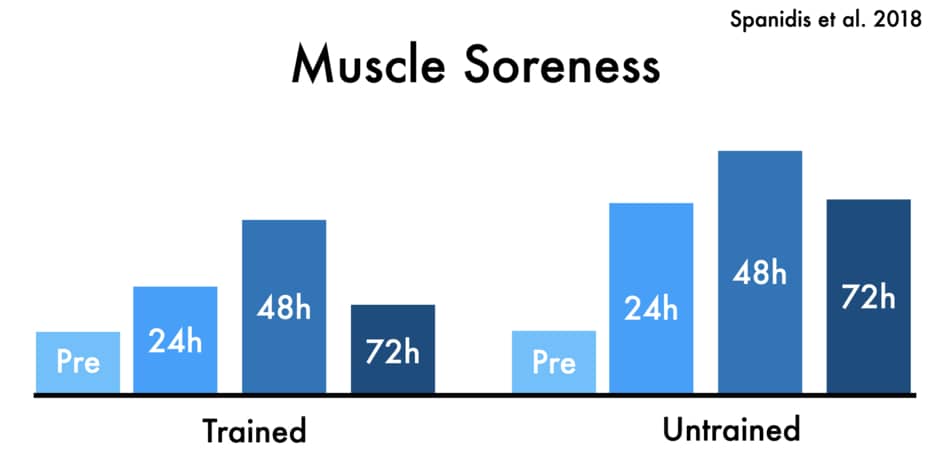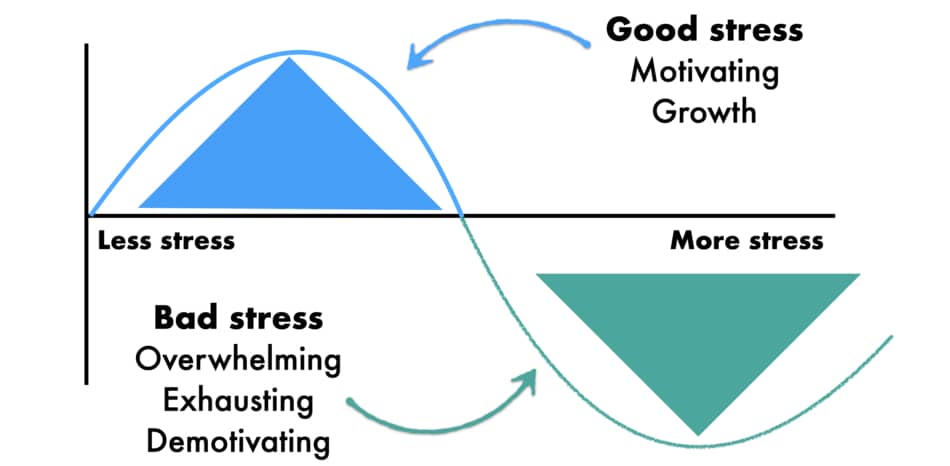A few months ago I made a radical change. I decided to get Orangetheory unlimited membership and start going there every day (mainly because I wanted to see results as fast as possible).
Today I will explain whether you can do orange theory every day, and most importantly, what are the benefits and drawbacks.

Overall, you should not do orange theory every day, especially if you’re a beginner. The body takes more time to recover from high-intensity exercise than untrained people. However, trained and advanced individuals can increase their training frequency to 5-7 days per week.
I will also touch on what happens if you train every day and how many days in a row you could do Orangetheory (realistically).
I did Orangetheory every day for a month
I did many 30-day fitness challenges in the past but the orange theory fitness was the most brutal of all. Firstly, all of my sessions were 60 minutes, and I got 20 splat points per class (on average).
Secondly, I completed all 30 days of training without days off for recovery (which was the dumbest thing I’ve ever done).
In other words, doing orange theory every day for a month was hard. I must say, this workout kick my ass, unlike any other classes I’ve ever done. However, physical exercise wasn’t the most difficult part.
Surprisingly, the most difficult part was the way how my body started to respond (I figured I’d share a few of those results in this article).
Benefits I’ve experienced doing Orangetheory every day
Here are the benefits that I’ve noticed after doing the orange theory every day for a month challenge (it’s not weight loss).
More energy
Exercising every day at orange theory significantly elevated my energy levels and mood (which was good because I thought I would hit the wall).
Productivity
I was able to get more things done in a shorter time.
Higher heart rate variability
My heart rate variability went up (I always wear my Fitbit heart rate monitor with the option to measure heart rate variability).
I was less hungry
I’ve noticed that doing 30 days of orange theory every day made me extremely hungry. Normally, I was satisfied with two meals per day. Here I was close to 4 meals and occasional snacks.
Drawbacks I’ve experienced from doing Orangetheory every day
One thing that I noticed right away was DOMS (delayed onset muscle soreness). After doing OTF class, my muscles were sore and I wasn’t able to recover.
I did plenty of foam rolling, cold showers, and massages. I’ve even used Biofreeze gel every day after class. Still, not enough to reduce muscle soreness.
Disadvantages of exercise every day according to research
According to the article published in the Journal of Sports Medicine, the biggest drawback of training every day without rest is elevated levels of reactive oxygen species in skeletal muscle.
These highly reactive chemicals have detrimental effects not only on force generation but also on muscle protein degradation,” states the journal.
According to the publication, “Free radicals, ROS, and lactate buildup leads to exercise-induced muscle damage and delayed onset muscle soreness (DOMS).”
Orangetheory is a 60-minute interval training class that combines rowing, treadmill, and floor exercises.
One study has shown that exercise intensity is directly related to the magnitude of free radicals production.
Dr. Ypatios Spanidis from the University of Thessaly in Greece examined the effects of training at high intensity in trained and untrained individuals (Spanidis et al. 2018).
See the graph below.

- On the left side of the graph, you see the oxidative stress biomarkers levels from the “trained” group.
- On the right side you see the same samples but from the “untrained” group.
It is clear that both groups experience muscle soreness after strenuous exercise.
However, it is also clear that a training background has a positive effect on how efficiently the body removes these metabolites from the system.
Untrained individuals need significantly more time for the body to clear all the metabolites from the system.
On the other hand, training experience leads to certain adaptations that make the body more efficient in reducing post-exercise inflammation.
My point is, beginners and untrained individuals should not do orange theory every day because daily strenuous exercise leads to increased muscle soreness.
Muscle soreness not only reduces exercise performance, but also impairs muscle strength, and can create psychological discomfort.
Going To Orange Theory Every Day
Training every day as a lifelong habit has been proven to have a positive impact on physical and mental health. One of the reasons why I wanted to start going to orange theory every day was to maintain my energy levels and boost my mood (especially if I did it first thing in the morning).
Plus, according to Health organizations, it is recommended to exercise every day for at least 30 minutes, as long as you maintain moderate intensity.
However, OTF is not a typical moderate-intensity activity.
Overall, the orange theory is hard on your body because it uses a high-intensity interval training protocol that combines rowing, running, and strength training, with minimum rest. Plus, OTF encourages to train at least 12 minutes with the intensity at 84% of maximum heart rate or more to increase the afterburn effect.
You can learn more about OTF workout intensity and “splat points” in my article here.
Training at OTF every day with high intensity (without efficient recovery time) comes with the cost of a greater generation of metabolites, free radicals, and reactive oxygen species. All this nasty buildup leads to severe muscle damage and oxidative stress.
How often should I go to Orangetheory to lose weight?
How often should you go to orange theory to lose weight will depend on your training background and experience, as well as your allostatic load.
Trained individuals who have lower allostatic load can train every other day.
On the other hand, beginners and/or people who have higher chronic physical and psychological stress should train twice per week at the OTF and focus the rest of the days on physical activity that has lower intensity.
Allostatic load refers to chronic exposure to physical and psychological stress. It is the cumulative effect of daily life experiences that include stressful events and major challenges.
(In other words, it’s not just the exercise frequency that matters)
Below you have a table with things that increase and decrease the allostatic load.
| Higher allostatic load | Lower allostatic load |
|---|---|
| Poor nutrition Calorie restriction Intense exercise Work stress Relationship stress Caregiving Financial stress Loneliness Negative emotions Environmental stress Alcohol and smoking Illness and injury | Balanced nutrition Financial stability and security Regular sleep Daily physical activity Social connections Positive emotions Time in nature Mindfulness Meditation Fun activities Intimate relationship Joy and pleasure |
In the table above, the list on your left contributes to elevated allostatic load, which has a negative impact on how your body will tolerate additional stress from strenuous exercise.
Things on the right contribute to lower allostatic load, which has a positive impact on your exercise, health, and recovery.
Sooner or later, people who want to train at OTF every day but have a higher allostatic load can not only burn out and “hit the wall”, but also experience poor sleep, circadian disruption, lack of motivation to exercise, and unhealthy eating behaviors.
On average, I don’t go to the orange theory more than 3-5 times per week.
For beginners, you should train at the OTF 2-3 times per week, whereas trained members can go even up to 4-5 days per week.
Of course, there are also some benefits of doing strenuous exercise multiple days in a row (more on that next).
Can I do Orangetheory two days in a row?
In general, you can do orange theory two days in a row, as long as you have enough recovery days scheduled prior to, or after training days.
Doing strenuous exercise back to back can serve as a challenge to boost your mood, self-esteem, and productivity.
It’s kind of like a low-dose stimulation or “good stress” that helps you to get better (we all need a little bit of stress).
On the other hand, increased training load without adequate recovery for a prolonged time can lead to higher allostatic load and overtraining (aka bad stress).
See the graph below.

The graph above illustrates the phenomenon called the hormesis effect, which is the adaptive response to moderate and intermittent stress.
Anything above the horizontal line is considered “good stress”, whereas anything under the line is “bad stress”.
The blue line shows that short-term physical and/or psychological stress have a positive impact on the body.
For example, doing orange theory 2 days in a row can be considered as good stress and enhance your performance.
On the other hand, the green line shows the negative effects once the stress lasts for too long, or too often.
For example, doing orange theory multiple days in a row without any break can make you feel progressively worse.
Please remember that allostatic load and balance between good and bad stress are not the same for everyone.
Some people may be able to do orange theory fitness for 5 days in a row and still feel good, whereas others need to recover after just one workout.
Can you do Orangetheory 5 days a week?
In general, you can do orange theory 5 days a week, as long as you have effective recovery strategies (e.g. stretching, cold water immersion, massage) to lower post-exercise fatigue.
Alternatively, you can combine regular 60-minute OTF sessions with shorter, 45-minute “Lift 45” workouts to lower total training volume.
Conclusion
Orangetheory Premier membership allows you to do an unlimited amount of sessions per month. However, this does not mean you should train there every day.
It is clear that beginners should not do Orangethory every day because strenuous exercise induces oxidative stress and muscle soreness not only at a much higher rate but also for a longer period of time.
For people who just getting started, orange theory 2 times a week is enough.
On the other hand, people who are already used to intensity can increase the workout frequency up to 5-7 days a week.
Of course, there is nothing wrong with doing fitness challenges to celebrate what your body is capable of doing.
